‘The Boy, the Mole, the Fox and the Horse’ Director Reflects on Animated Short’s Themes: “Why Not Have Big Hopes?”
- Oops!Something went wrong.Please try again later.
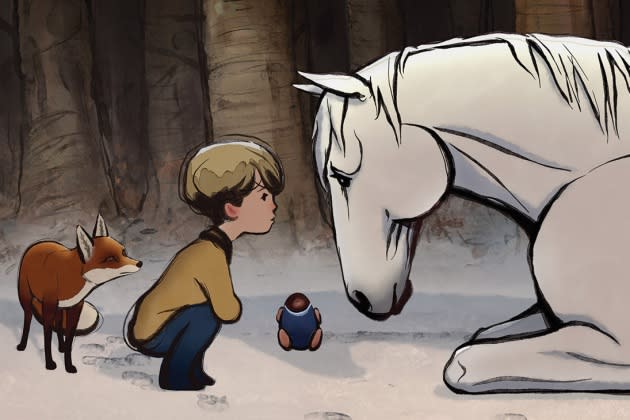
The moving Oscar-nominated animated short The Boy, the Mole, the Fox and the Horse, based on the illustrated book of the same name by British artist Charlie Mackesy, wasn’t initially planned as a published work or a film but rather began as a series of drawings in early 2018 that he posted on his Instagram account (now with a 1.7 million following), featuring the four titular characters and their musings about kindness, hope, friendship and courage.
For instance, in one drawing on Instagram — which is also featured in the short — the boy asks, “What’s the bravest thing you’ve ever said?” The horse replies, “Help.” Mackesy began to post more of his drawings and was moved by the response. “Everyone was discussing their feelings and what was difficult and what they hoped for,” the director tells THR.
More from The Hollywood Reporter
Hollywood Flashback: 'Pinocchio' Music Carved a Place in Oscar Musical History
'The Banshees of Inisherin' Composer Says He Approached the Film Like a Fable
This led to the publication of the book in 2019, followed by production of the animated short that started in early 2020 during lockdown. Mackesy and Peter Baynton directed, while Matthew Freud, Cara Speller and Bad Robot’s J.J. Abrams and Hannah Minghella (who was a fan of the book) also served as producers.
The short, made with the BBC and available on Apple TV+ outside the U.K., follows the boy (voiced by newcomer Jude Coward Nicoll), mole (Tom Hollander), fox (Idris Elba) and horse (Gabriel Byrne) and the unlikely friendship that develops as the four come together to share their musings while the boy searches for home. At one point, the mole asks the boy what he would like to be when he grows up. The boy responds, “Kind.”
The animation team worked remotely because of COVID, with a shared goal of creating a look that reflected as closely as possible the drawings in the book, which were ink and watercolor. “We wanted to make those drawings basically move but keep the spirit of the fluidity of the ink and the line and the varying thickness of line,” Mackesy says.
The toughest part, he found, was developing the characters, particularly the boy. “In the book, he didn’t really have a recognizable face structure. He was always slightly obscure,” says Mackesy. “So that journey took a long time. I did lots of portrait studies. [After] one portrait study of a boy I did in particular, I produced it in the morning, and everyone said, ‘That’s the boy.’ “
But Mackesy admits that he worried about being too descriptive. “I liked the idea that he was a bit obscure so that people could project themselves or that he could be anyone,” he says, “but I knew in this case, with the film, we need to be much more specific and say, ‘This is who he is, this is what he looks like, and these are emotions and that’s how we’re going to connect with him.’ “
The project became more relevant as people became more isolated during the pandemic. “Honestly, sometimes my inbox had 50,000 emails [in response to his drawings and book], and a lot of them were very painful,” Mackesy recalls. “A lot of them were telling me the truth of their existence with COVID or otherwise — whether it was schools or hospitals or individuals. It was so unbelievably moving to read them.”
It was Mackesy’s wish that when released, the short might elicit some of the feelings described in the story, such as hope or the understanding that it’s OK to ask for help. “I hoped that when the film ended, people would feel moved, hopeful and connected,” he says. “And to feel less alone and more comfortable in their own skin. They’re big hopes. But why not have big hopes?”
***
Rounding Out the Competition
AN OSTRICH TOLD ME THE WORLD IS FAKE AND I THINK I BELIEVE IT
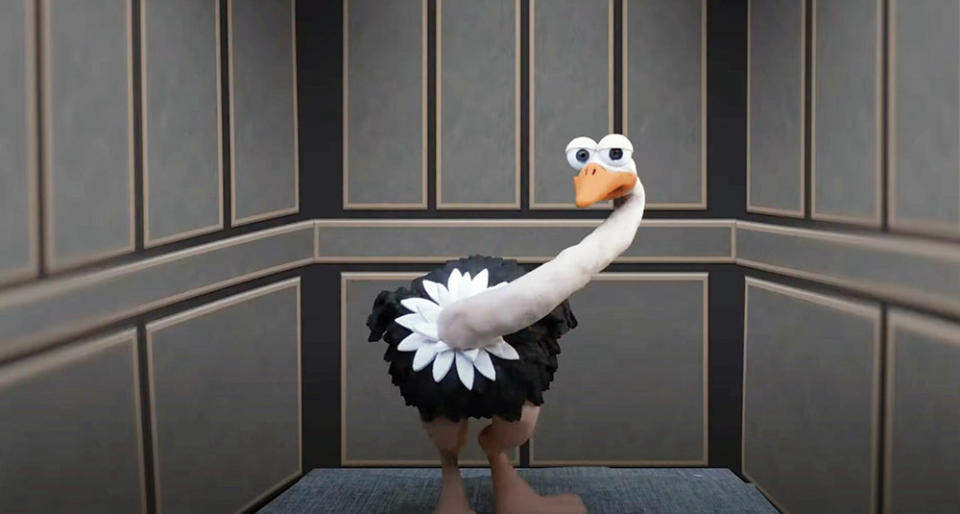
Writer-director Lachlan Pendragon crafted this stop-motion short as part of his doctorate in visual arts at the Griffith Film School in Brisbane, Australia. He also voices the office worker named Neil, who, after being confronted by the eponymous ostrich, discovers that their world is, in fact, simply a stop-motion animated universe.
ICE MERCHANTS
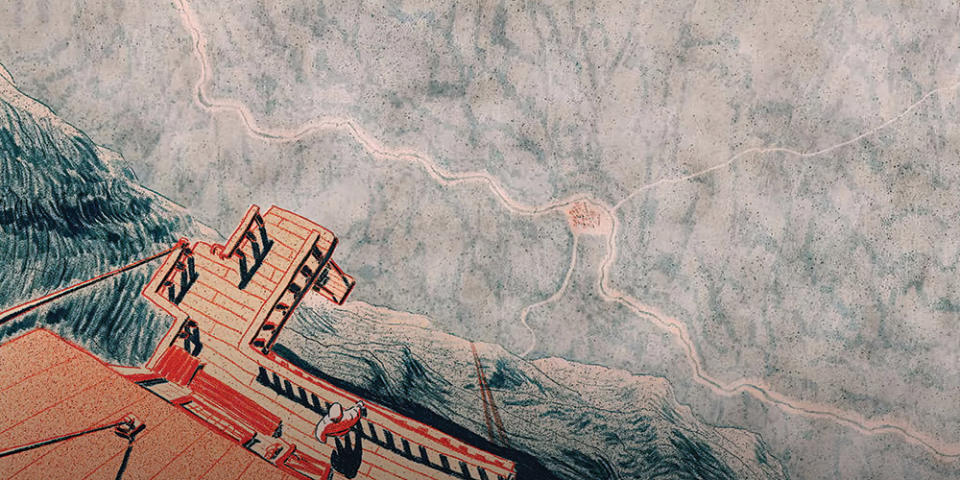
João Gonzalez wrote and directed this dialogue-free short — which took home the Leitz Cine Discovery Prize at the 2022 Cannes Film Festival, where it became the first Portuguese animated title to be awarded at the fest — that follows a father and son who travel precariously every day by parachute from their cliffside home to the small village below to sell the ice they produce at the local market.
MY YEAR OF DICKS
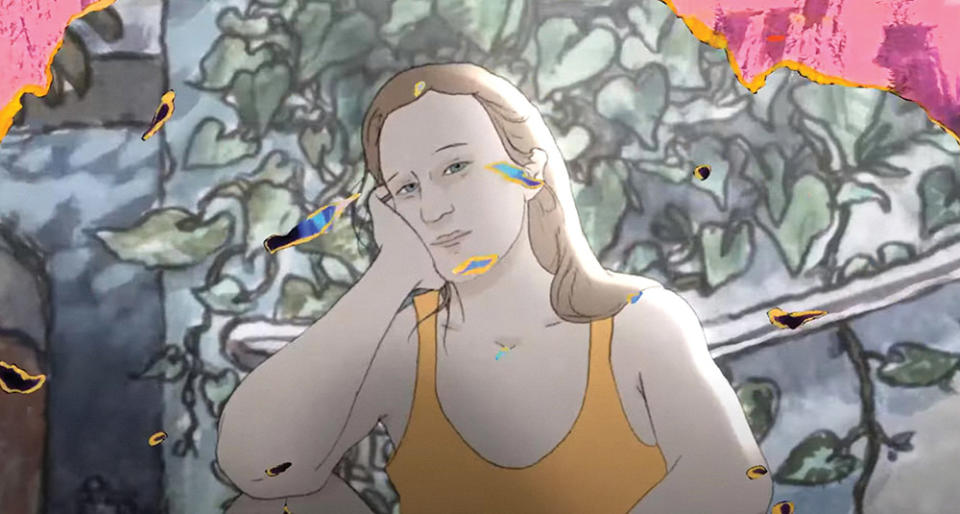
Directed by Sara Gunnarsdóttir and written by Pamela Ribon (who adapted a story in her 2014 memoir, Notes to Boys: And Other Things I Shouldn’t Share in Public
), this provocatively titled short follows 15-year-old Pam in 1991 Houston as she sets out on a comic mission of self-discovery (and later disappointment), searching for the right boy with whom to lose her virginity.
THE FLYING SAILOR
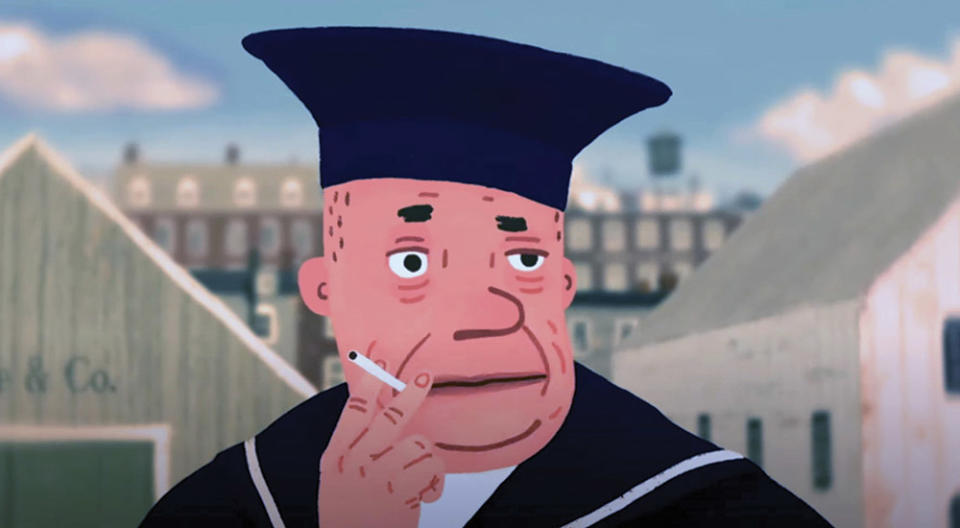
Acclaimed animators Wendy Tilby and Amanda Forbis earned their third shared nomination in this category — following When the Day Breaks
in 2000 and Wild Life
in 2012 — and return to Oscar competition with their latest short, which follows a sailor’s near-death experience when he is ejected a little over a mile into the air after two ships collide in Halifax Harbour. — TYLER COATES
This story first appeared in a Feb. stand-alone issue of The Hollywood Reporter magazine. To receive the magazine, click here to subscribe.

